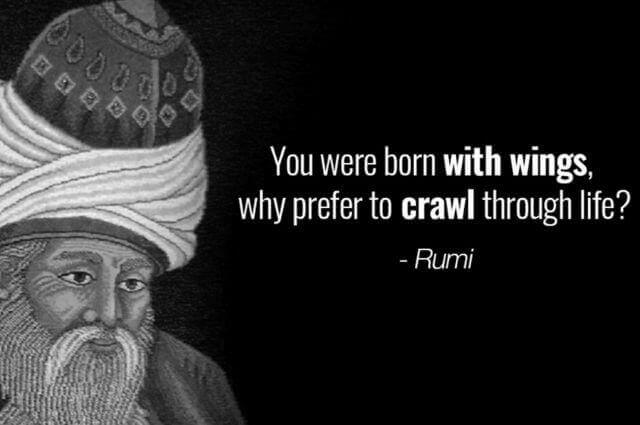Lifestyle
Learn The Difference Between Hunger and Craving

Hunger and craving are two words that come up regularly in conversations about connection with food. Despite the fact that they both include a want for food, these ideas refer to different physiological and psychological events.
To keep our eating habits balanced and healthy, it’s essential to know the difference between hunger and cravings. In this article, we will explore the fundamental mechanism, the impact on our bodies and thoughts, and practical strategies for managing hunger and cravings.
Hunger: The biological signal for nourishment
To convey its need for food, our body uses the common physiological reaction of hunger. Ghrelin, a hormone that is produced in the stomach, is the main factor of hunger. When the stomach is empty, ghrelin levels rise, it provide signal to brain that it’s time consume the food. Our body receives the nourishment it needs to function at its peak thanks to this biological process.
Blood sugar levels, physical activity, and the body’s overall energy expenditure can all have an impact on hunger in addition to ghrelin. When these factors come together to result in a caloric deficit, the body initiates the hunger response to encourage food intake. It’s important to keep in mind that hunger is a normal and healthy sensation that should be controlled by consuming nutritional meals.
The Psychology of Craving
Cravings, in contrast to hunger, are motivated by psychological rather than physiological considerations. Cravings are strong cravings for certain foods that are frequently heavy in sugar, salt, or fat.
A number of things, such as emotions, memories, and the environment, might cause these urges. For instance, boredom, stress, or even the sight and fragrance of a favourite meal can all cause cravings to start.
The brain’s reward system, especially the release of dopamine, a neurotransmitter connected to pleasure and reward, is linked to cravings. Dopamine is released when we eat meals that satisfy our appetites, giving us a momentary feeling of pleasure and satisfaction. Recognising that giving in to urges without moderation can result in poor eating habits and subsequent weight gain.
How to differentiate between hunger and cravings
It might be difficult to tell the difference between hunger and cravings because they both have similar signs and symptoms. However, there are a few crucial signs that might assist people in differentiating between the two.
| Aspect | Hunger | Cravings |
| Physical sensations | People may experience physical symptoms like a growing stomach, dizziness, or poor energy when they are hungry. These feelings are a result of the body needing food. | Cravings are frequently fueled by a desire for certain foods and are frequently unconnected to physical sensations. |
| Timing and regularity | Regular periods, such mealtimes or many hours after the last meal, are when hunger tends to strike. It is a regular, predictable sensation that synchronises with the body’s natural cycles. | Contrarily, cravings might appear at any moment, regardless of when the previous meal was eaten. They frequently show up out of nowhere and continue until the urge is satisfied. |
| Emotional factors | Hunger is the basic biological response | Emotional factors might have an impact on cravings. Cravings for certain meals or delicacies can be sparked by several emotions, including boredom, stress, and others. Individuals can discover better ways to satisfy their craving and address the underlying triggers by recognising the emotional component of cravings. |
| Specificity of Food Choice | People are often more receptive to a variety of foods and more willing to choose a balanced meal when they are hungry. | Cravings are quite specific, focusing on specific foods that are frequently indulgent, heavy in sugar, fat, or salt, and may not be necessary for a person’s total nutritional requirements. |
| Satiety and Satisfaction | After enjoying a well-balanced meal, eating to satisfy hunger results in a feeling of contentment and fullness. | While satisfying a craving can be pleasurable right away, it frequently leaves people feeling unfulfilled and may cause guilt or regret. |
Techniques for controlling cravings and hunger
A balanced strategy that takes into account both the physiological and psychological factors is necessary to manage hunger and cravings. People can maintain a positive connection with food and make thoughtful decisions by using the following techniques:
1. Nutritious meals
Eating well-balanced meals with a mix of protein, good fats, and complex carbs will help control appetite. These nutrients support sensations of fullness and long-lasting energy, which reduces the probability of having strong cravings.
2. Mindful eating
In order to practice mindful eating, one must pay attention to both the sensory experience of eating and the body’s signals of hunger and fullness. People may better identify whether they are actually hungry or if cravings are present by eating mindfully, taking their time, and savouring each bite.
3. Managing Stress
Finding good stress management techniques is crucial since stress may cause cravings. You may feel less overwhelmed and be less prone to turn to food for comfort if you practise exercise, yoga, meditation, and other stress-relieving activities.
4. Finding the triggers
It’s essential to comprehend the reasons behind cravings in order to successfully manage them. People can find patterns and connections between emotions, settings, and certain appetites by keeping a food journal or getting expert advice. Alternative coping techniques can be created after the triggers have been identified
5. Stay Hydrated
Hunger and thirst are frequently confused. Maintain a sufficient level of hydration throughout the day, drinking water might aid in controlling unneeded food cravings.
6. Regular Meal Schedule
Keep a steady mealtime routine and adhere to it. This behaviour reduces the chance of overeating because of protracted hunger and regulates appetite hormones.
7. Take a Good Sleep
Make getting enough sleep a priority since lack of sleep can regulate with the hormones that control appetite and make it more likely that you’ll need food.
8. Look for Expert Assistance
Consider getting assistance from a qualified dietician or other healthcare expert if controlling your cravings is a challenge for you or if doing so has a substantial negative impact on your health.
Keep in mind that controlling cravings and hunger is a long process that calls for tolerance and self-compassion. On a person’s general health and well-being, small, lasting modifications in lifestyle and eating patterns can have a profoundly favourable effect.
We may adopt a healthier and more balanced eating strategy by paying attention to our bodies’ signals and making informed food decisions.
The impact of hunger and cravings on eating habits
Maintaining a healthy connection with food requires an understanding of how hunger and cravings affect eating patterns. When hunger is disregarded or badly addressed, people may be more likely to overeat or make poor food decisions.
Contrarily, giving in to desires uncontrolledly can result in excessive eating of high-calorie, nutrient-poor meals, which may result in weight gain and other health problems.
People who can distinguish between hunger and desires can consciously control how much food they can eat. They might put their energy into eating balanced meals and indulge in little amounts when cravings strike.
It might be beneficial to achieve a healthy balance between satisfying hunger and controlling cravings by learning to eat mindfully and intuitively.
Suitable Healthy Snacks to Satisfy Cravings and Hunger
For the purpose of satisfying hunger and cravings without sacrificing general wellbeing, selecting healthy snack meal is crucial. Here are some wholesome substitutions that you may like:
Fresh fruits
Fruits are a great source of fibre, natural sugars, and important vitamins. They provide a delicious and energising alternative for satisfying cravings while nourishing the body.
Greek yogurt
Greek yoghurt is a high-protein treat that can help stave off hunger. To enhance flavour, you may top it with fruit or a honey drizzle.
Seeds and nuts
Healthy fats, protein, and fibre may all be found in plenty in nuts and seeds. They may be eaten on their own or combined with salads, yoghurt, or smoothies to offer a delicious crunch.
Vegetable sticks with hummus
A tasty and healthy snack choice is a serving of hummus with crunchy veggies like carrots, celery, and bell peppers.
Wrapping Up
Forging a positive connection with food, it is essential to distinguish between hunger and cravings. While cravings are typically affected by psychological and emotional factors, hunger signals our body’s need for food.
We can achieve a healthy balance between taking care of ourselves and occasionally treating ourselves by paying attention to our body, engaging in mindfulness practices, and eating a balanced diet.
In the end, learning how to control our hunger and cravings gives us the power to live healthier and more satisfying lives.
-

 Books3 months ago
Books3 months ago10 Life-Changing Lessons from ‘Atomic Habits’ by James Clear
-

 Growth3 months ago
Growth3 months agoThe Hero’s Journey: Transformative Questions for Success?
-

 Growth2 months ago
Growth2 months agoSimple Ways To Boost Your Confidence In A Day
-

 Growth3 months ago
Growth3 months agoHow Cognitive Biases Affect Our Decision-Making Process
-

 Mental Health3 months ago
Mental Health3 months agoWhat Are the Mental Health Problems Among Adolescents?
-

 Quotes3 months ago
Quotes3 months ago40 Best Swami Vivekananda Quotes On Motivation, Love and Life
-

 Mental Health3 months ago
Mental Health3 months agoWhat Are the Most Common Mental Health Issues in Young Adults?
-

 Mental Health3 months ago
Mental Health3 months agoPersonalized Physical Therapy: Tailoring Treatments to Individual Needs




















